The beginning of 2023 marks a fresh start for the housing market. As the year opens, housing market predictions are beginning to come out, as buyers and sellers show interest in entering the market in 2023.
Housing trends are affected by several factors, and the changes in these factors dictate what you can expect for the year. Investments are never to be made lightly and being aware of the current trends, and market insights will help you make the best decision for your investments and your future.
2023 Housing Trends
To help you get started on your real estate journey for 2023, you will need some general information and market insights. Here is a quick compilation of 2023 housing trends you should be aware of before you invest in luxury real estate this year.
Location Preference
The advent of the pandemic has changed the preferences of homebuyers in regard to the location of their home according to 2023 housing trends. With the normalization of work-from-home and hybrid work set-ups, buyers preferred finding house and lots for sale locations that can offer them convenience and a better quality of living. With the option to stay home while working, more and more homebuyers are looking at homes that are located outside the metro while still maintaining easy access to the city and business sectors as needed. This change in location preference may also be affected by lifestyle preference, costs of living, and access to nature and the outdoors.
Popular locations in 2023 include Laguna, Daang Hari, and Tagaytay. Some interested buyers are also looking at luxury homes in locations such as Baguio, Davao, and Boracay. Brittany Corporation has several luxury real estate listings in these communities, making it the perfect choice for a change of location for you and your family.
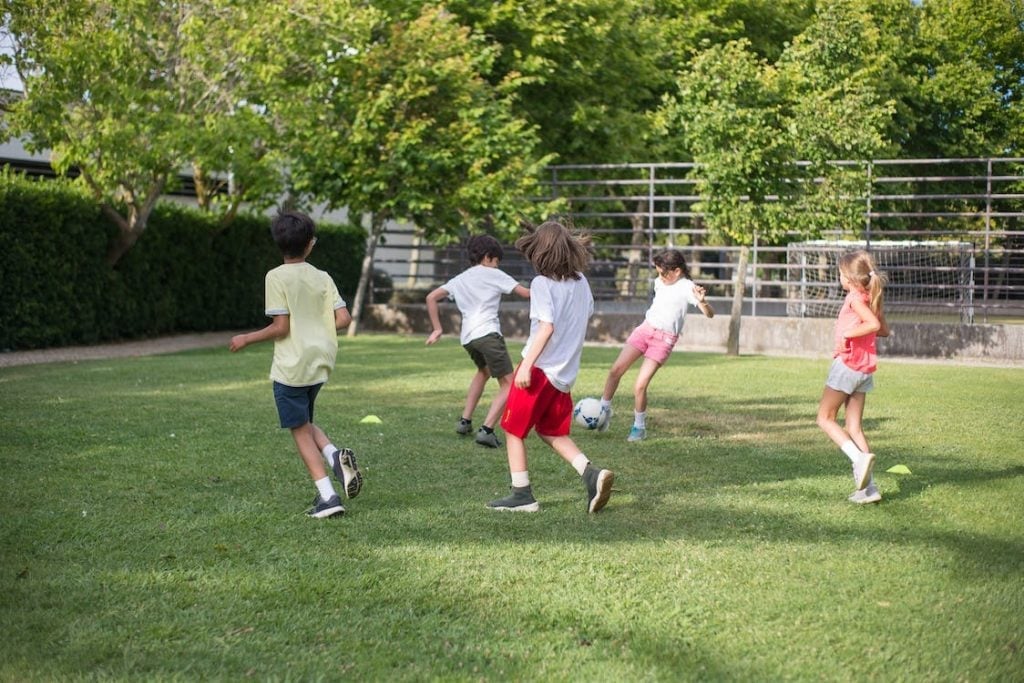
Classic and Timeless Design
A beautiful home in the Philippines is an investment for the future. And when it comes to finding a dream home, classic and timeless designs are projected to be the top of the housing trends in 2023. Classic and timeless homes speak to luxury living and the image of long-lasting legacy.
Housing trends 2023 will likely stay true to houses that look timeless as they are the perfect canvas that families can use to build their dream life. If you are scouring the 2023 housing market looking for a classic home, then a Brittany luxury home is perfect for you. Brittany Corporation is a premier luxury real estate developer that specializes in exclusive luxury homes inspired by the architecture of Italy, England, and America. Luxury and classic styles go hand in hand, and Brittany will give you the best luxury home options.
Outdoor Space and Amenities
Housing market predictions also point toward buyers looking for a home with access to outdoor space and amenities. This year, families are reluctant to give up extra outdoor space in the real estate options they are viewing. The housing market in the Philippines has seen home sales increase in areas like Tagaytay and Laguna, which both have great connections to natural spaces. Baguio is also seeing a spike in interest in the housing market.
As for amenities, more home buyers are looking to maximise their real estate investments by purchasing homes in communities that offer luxury amenities like playgrounds, gardens, clubhouse, swimming pools, and fitness gyms. Luxury home sales for the year will likely center around communities that offer more than just a comfortable home. During the pandemic, being stuck at home means that now buyers are looking for homes that will give them the most bang for their buck when it comes to features, space, and community amenities.
Families in search of new homes will make a great choice in investing in a Brittany luxury home. At Vista Alabang, a Brittany development, homeowners get to live in beautiful Italian-themed homes. They will also have access to amenities such as basketball and tennis courts, swimming pool, kiddie pool, children’s playground, and clubhouse. These amenities are also present in Brittany’s luxury communities in Santa Rosa, Laguna. Home prices in these locations will include the privilege of access to these premium amenities and outdoor spaces.
Increase in Real Estate Prices
For the housing market in 2023, predictions point to an increase in home prices. Real estate and home prices will continue to rise in 2023. This can be due to several factors, including inflation, supply, and demand.
The biggest driving factor for the increase in home prices is inflation. The current rate of inflation in the Philippines is a big concern for the economy. The market, especially the housing market is greatly affected by inflation. According to the mandate by a chief economist at a central bank, inflation rates should be kep below 4% to keep the market and home prices stable and profitable for both sellers and buyers.
Majority of rising inflation rates are attributed to the cost of food and energy imports from markets outside of the Philippines. A lot of rising prices can affect living costs, production costs, and construction costs, which also affects the final prices of homes on the real estate market.
Rising Interest Rates for House and Lots For Sale
Predictions for 2023 housing trends state that higher interest rates are expected. Rising interest rates makes it more costly to arrange loans for real estate purchases. This increase in interest rates may then affect housing market demand and home prices.
You are likely to see the effects of high interest rates through the change in mortgage rates. The Bangko Sentral ng Pilipinas increased the policy and mortgage rates by 225 basis points, brining interest rates to 4.25 percent.
Rising interest rates can affect the price of a home for sale because developers may turn to current interest rates to determine their pricing structures.

Increase in Mortgage Rates
2023 housing market trends is predicted to see a rise in mortgage rates as well. During the latter half of 2022, bank mortgage rates on average were at 7.8 percent, which shows an increase in mortgage rates from the 7.3 percent of second quarter 2022. For reference, the average mortgage rate in 2021 during that same period was at 7.4 percent.
Interest rates and mortgage rates both affect the housing market, especially when it comes to home sales. Prices and mortgage rates will always be in tandem, with a change in one affecting the rate of the other.
As you venture into the real estate market in 2023, it is essential you study the current market, interest rates, and mortgage rates. Doing so will prepare you and help you make well-informed decisions regarding your investment in luxury homes and luxury real estate.
High Supply of Housing Inventory
The demand for housing in the Philippines, especially in Metro Manila remains high. Return to on-site work as well as face-to-face classes have made families consider buying homes that are conveniently located closer to workplaces and schools.
That being said, there remains a high supply of real estate available on the market. Luxury homes have been seeing a rise in demand, and supply is projected to remain stable for 2023, revitalizing the economy.
Brittany Corporation has several RFO luxury homes ready for interested buyers. With sprawling properties located in some of the most sought-after destinations in and out of the metro, Brittany can give you an edge in the luxury housing market in 2023. Several luxury lots in exclusive Brittany communities are also available for you to build your dream luxury home.
Start the Year Right With an Investment in Brittany
Brittany Corporation is one of the country’s top luxury real estate developer with years of experience creating beautiful luxury communities for families seeking a world-class lifestyle. Investing in a home by Brittany will give you and our family a home that exudes class and luxury.
Brittany Corporation has several luxury communities in sought-after locales like Alabang, Santa Rosa, and Tagaytay. A new luxury community is also in the works in Daang Hari, which will also be the site of an upcoming central business district.
Luxury, convenience, and access has marked the different Brittany properties. Each one offers residents a luxury experience inspired by beautiful destinations such as Italy, England, America, and Switzerland. To buy a Brittany luxury home is to buy into a luxury world-class lifestyle.
To learn more about the luxury listings offered by Brittany Corporation, simply browse our website. And to keep updated on the latest luxury real estate news and trends, follow Brittany on LinkedIn and YouTube.
Suggested Read: The Ultimate List Of Questions To Ask When Buying A House
Suggested Read: Rising Demand For Luxury Properties: Who’s Buying
Suggested Read: Why Are Lower Mortgage Interest Rates Being Offered
Suggested Read: Best Mid-Year Mortgage Offers Available Right Now
Suggested Read: How Do Bonds Affect Mortgage Rates
When Filipinos look for a house to live in, the top considerations they look at are the location, size of the household, exterior and interior look, and other factors. Despite having similar heights to the rest of the world, the Philippines is where the equator crosses, hence, they constantly have far warmer temperatures than the rest of the world. This is brought on by the equator’s nearly year-round continual exposure to sunshine. Given the humidity in the Philippines, it is very warm, especially during the summer. Now that finding a home is typically done online, it has been concluded that most searches in finding a house include having air conditioning as one of the cooling amenities.
The temperature and humidity levels that a home maintains are its key sources of comfort. People have various preferences when it comes to luxury and comfort, and comfort can be a subjective concept. To keep everyone comfortable, cooling and heating systems are present in most homes. Because it keeps us warm in the winter and cool in the summer, modern air conditioning has become an indispensable component of our daily life. Many homes now have modern air conditioners, but how do these systems work with luxurious homes?
What features make luxury homes?
-
Modern/Smart Appliances
A contemporary luxury home is furnished with state-of-the-art networked systems, appliances, and equipment that can be remotely and automatically operated.
Modern luxury homes often have smart technology features like motion sensor lighting, internet-connected security cameras, auto-adjusting thermostats, and drapes that open and close at sunrise and sunset.
A smart home‘s convenience is what makes it essential for living in luxury.
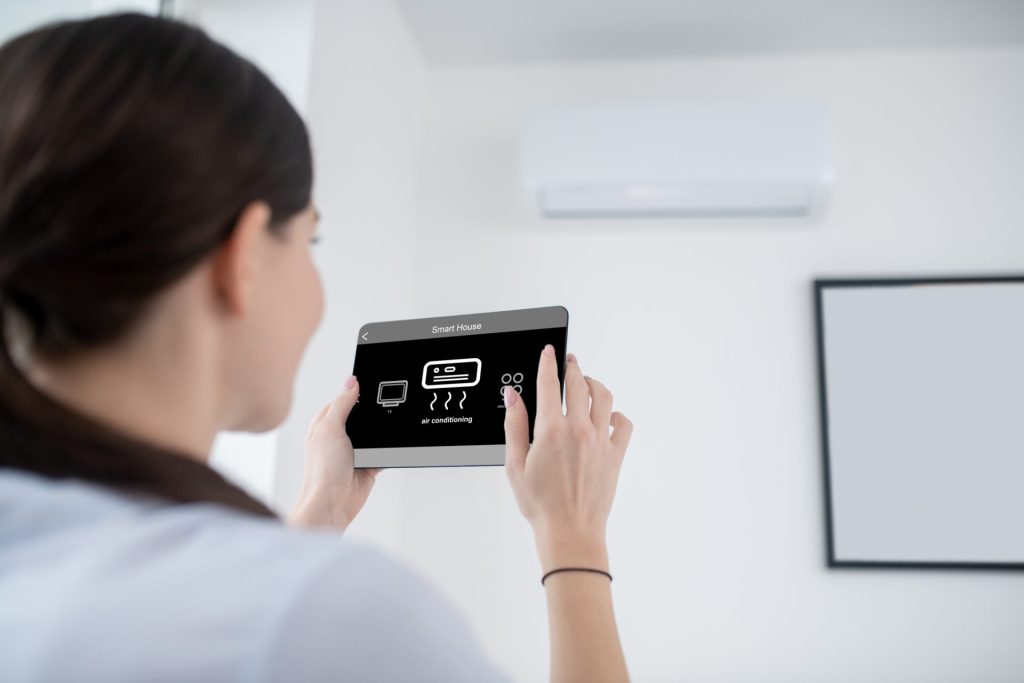
-
Security System
There are many features in a luxurious property that could draw unwelcome attention.
In reality, criminals hoping for a huge payoff frequently target high-end homes. As a result, one of the unique features of contemporary luxury residences is the provision for home security.
Most houses have more than just an alarm system. They have monitored systems connected to a round-the-clock security guard working out of the provider’s office (armed response). In the event of a fire, flood, or break-in, these devices can expedite the process of informing the appropriate authorities. Additionally, they aid in lowering the frequency of false alarms.
-
Architecture
The level of customization and attention to detail that a luxury home provides is incredible. The craftsmanship is a major factor in the high cost.
Reputable contractors will tear down existing buildings and construct new ones with architectural details like arches, rounded corners, and art niches. Real estate in the luxury category is expensive for a reason. These expensive homes have high-end features that are not found in regular residences. Keep in mind that luxury can only be achieved by incorporating the most cutting-edge conveniences, facilities, and technologies.
-
Distinct Amenities
Having distinct areas that help to provide comfort can be found in all the corners of a luxury home. It can be found in the kitchen, bedrooms, gym area, bathrooms, and even in the dressing rooms.
A luxurious bathroom can help you unwind after a long day. Luxury implies the presence of spa-quality products as well as elements that enhance attractiveness, comfort, and cutting-edge performance. In a lavish bathroom with a big tub, beveled mirrors, a calming light, and alcove walls to reduce body heat, you can gradually immerse yourself in massaging bubbles.
The bedroom is expanded into the dressing room. The provision of owners with a location to store and exhibit high-end clothing is a top objective for luxury residences. It is essential to have a sizable walk-in closet with appropriate lighting, mirrors, racks to display purses and shoes, and also something that will give much more comfort- an air-conditioning system.
But much more than these top luxurious features, what is not to miss are the cooling amenities for your luxury home.
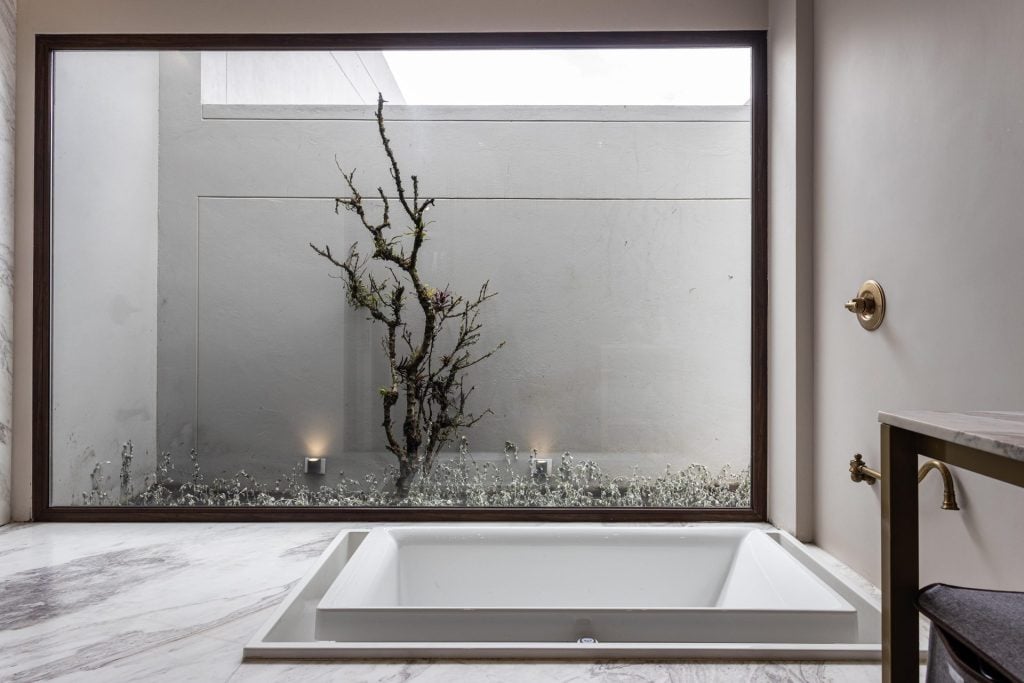
What are the best amenities in Luxury Houses?
With technological developments, air conditioners are far more effective in cooling off entire homes and rooms. The most significant shift is that designs are now considerably more understated and perfectly complement contemporary luxury home styles. And as the summer season nears, here are some tips on how to make your house one of the adaptive homes.
You can choose the right Heating, Ventilating, and Air Conditioning or HVAC equipment by being well-informed about the heating and cooling options available for your home. You can have a greater understanding of what is available, how it can match your needs, and how it can improve your lifestyle by discussing the advantages of energy-efficient technologies and superior construction with your builder.

-
Ducted Air Conditioners
In a house, ducts can be put in every single room. A complete solution is offered by ducted air conditioning. Due to their flat installation against the roof, these vents are nearly undetectable. The main selling point of this kind of air conditioning system is the ability to adjust different temperatures in various rooms or “zones.” For instance, if you don’t want the smell of cooking to wake you up while you’re sleeping, you can close the kitchen vent. Additionally, you’ll note that a room with ducted air conditioning is cooler than typical when you enter it, but you won’t experience a surge of chilly air as you move around the space.
The majority of brand-new homes have forced air systems, which include an air duct system and a central furnace. Usually, either natural gas or electricity is used to power the furnace. Air from heat registers circulates throughout the living space after being forced through supply ducts by a blower. In order to reheat the air at the furnace, the blower also pulls cooler air through the return ductwork. In hot weather, cool air from a central air conditioning system can be distributed via the same ductwork. A well-designed duct system can deliver balanced airflow to all rooms for maximum comfort and efficiency, regardless of the season.
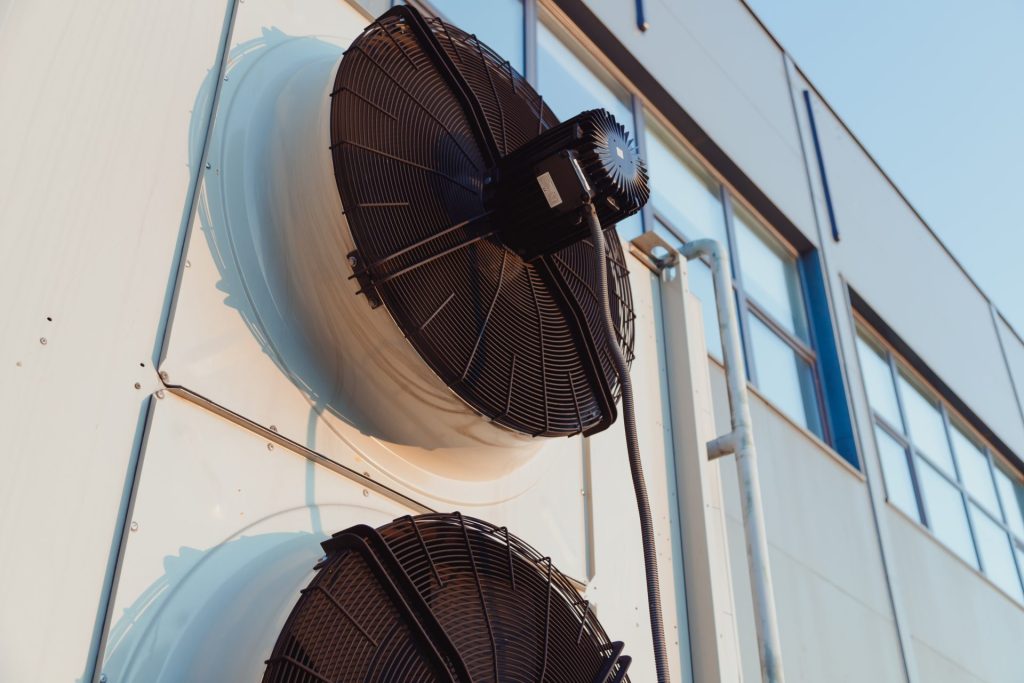
-
Thermostats
Your home can maintain constant inside temperatures thanks to the thermostat. There may be numerous thermostats in larger homes. Your heating or cooling system won’t turn on until it deviates by one degree from the desired temperature you’ve set on your thermostat. The thermostat instructs the system to turn off when the desired temperature is reached.
A dependable, economical option to reduce energy use and save money on home heating and cooling is to use a programmable thermostat. You can program the temperature to be set automatically on days and times when living spaces won’t be occupied.
-
Quality Insulation and Construction Work
Your home will feel warmer in the winter and cooler in the summer thanks to energy-efficient upgrades like improved windows, premium insulation, and high-quality building materials. Double-paned windows with argon gas insulation prevent heat from escaping during the winter and from entering during the summer when temperatures outside skyrocket.
Higher levels of insulation, when correctly placed, keep your home from being too hot or cold. Improved insulation also helps maintain temperature balance in your home, particularly from room to room, which can lessen the strain on your HVAC system.
Although the initial cost may appear excessive, superior construction and energy-efficient equipment endure longer and require less maintenance over time. More insulation, better windows, and tighter construction also imply less noise, airborne dust, drafts, and exposure to air pollution. Some Energy Star-certified homes are thought to be at least 10% more efficient than newly constructed homes built to code.
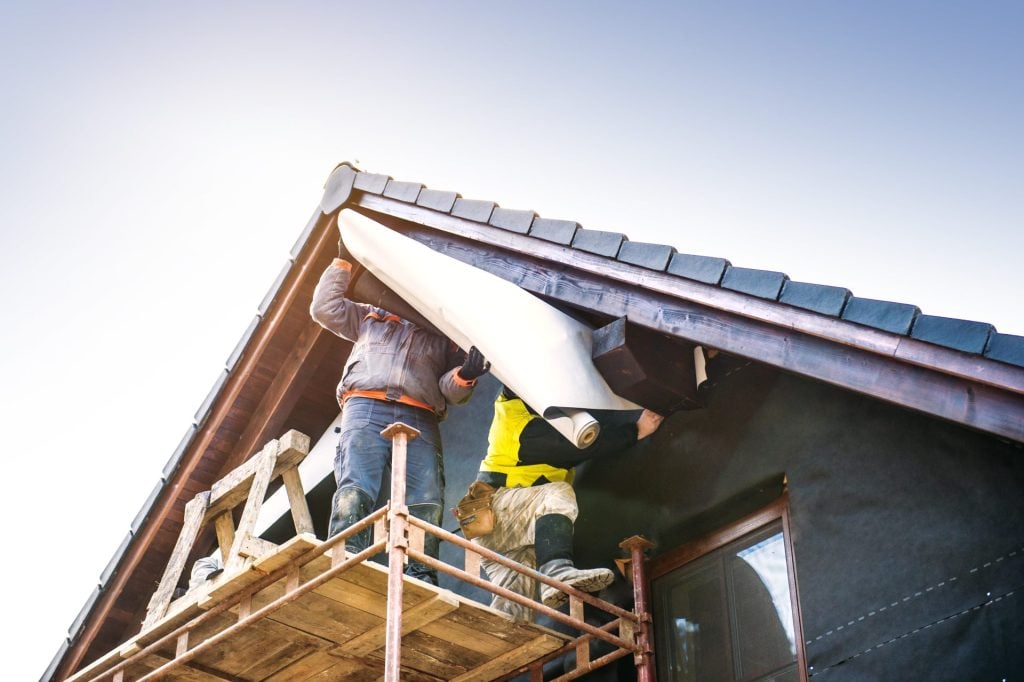
Luxury Homes with the Best Cooling Amenities
While many factors should be considered when buying a luxury home, it has been proven many times that Brittany properties have great locations to make sure that buyers and homeowners will not be disappointed.
Places like Baguio has a cool environment if you are looking for the perfect weather throughout the year.
Suggested Read: The Most Luxurious Homes in the World
Suggested Read: Property Listings | Luxury Homes for Sale in the Philippines
When it comes to our purchases, we only want what is best. And one of the best places to go to when you want to cop the best item is an auction. However, despite the good deals you can get from auctions, many people are hesitant to participate in an auction, and this is due to the fact that when we think of auctions, the first things that come to mind are crowded auction rooms filled with elite people bidding after expensive artworks and antiques. However, auctions are evolving and this calls for better reasons to participate in them. As a matter of fact, the market in the auction world is constantly expanding, allowing many bidders to join the auction.
If you are a beginner in the world of auctions, you are in the right place. Here’s everything you need to know about it:
What are auctions?
An auction is a sales event of selling and buying items by setting bids and then selling the items to the highest bidder. An auction is best known for placing and determining the value of the item being bid or sold. And so, if the seller has rare items or even properties that he wants to sell, he can have them on auctions and be offered up for bids. Items being sold in an auction are not only limited to the aforementioned; the item can also be antiques, collectibles, fine art, and even luxury real estate.
For a little trip down the lane, it has been said that auctions’ long history started in ancient Greece, approximately 500 BC, when women were auctioned off for marriage. In the United States, early auctions were used for the sole purpose of selling and buying slaves, lands, and farm products. Of course, many things have changed since then. In most of the auctions happening nowadays, people are not being auctioned just like slaves and women. But the tradition goes on because it is the fastest way to buy and sell goods and services as well as the competitive bidding that bidders enjoy.
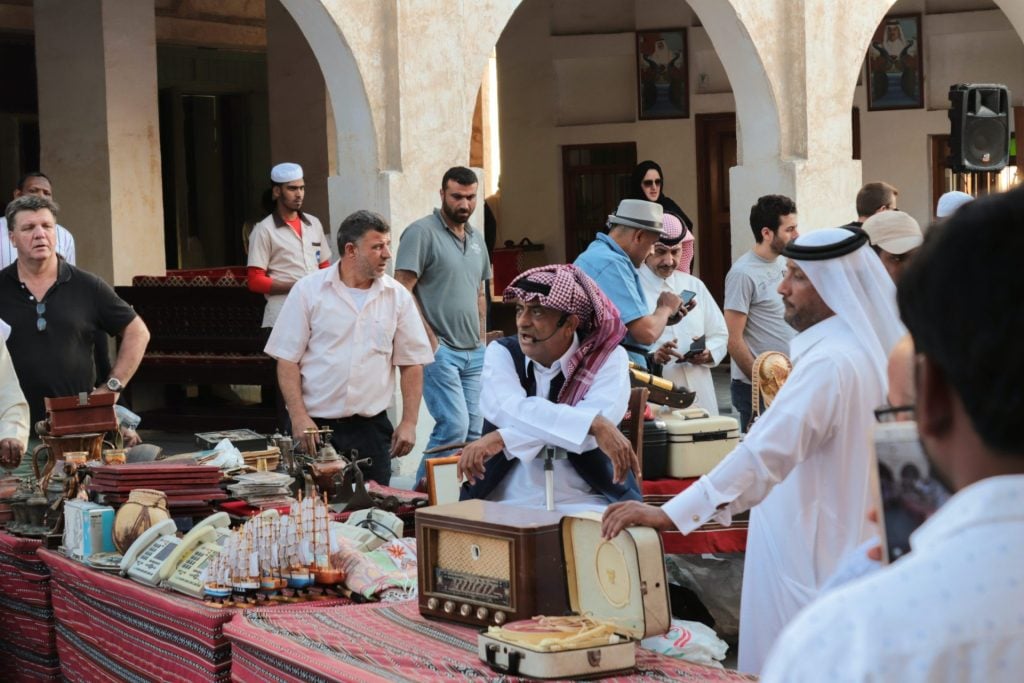
How do auctions work? What is an auction process?
Usually, before an auction happens, the participating bidders will receive a notification concerning a preview show. This is an opportunity given to potential buyers to examine the items on sale. The notification is given depending on the type of auction. If the auction is solely digital, there will be an email notification sent to the potential bidders about the preview a few days prior to the day of the auction itself. If the auction is to be done live, a day before or a few hours before the auction starts, the preview show happens.
Once the potential bidders are done with the preview show, they will proceed to register with the auctioneer. This is when the bidders are asked about their personal details and given a bidder card with a number printed on it to identify each bidder. After the said registration, the bidders will hear a bell sound from the auctioneer which signals the beginning of the auction. This is when the auctioneer will present the item to the potential buyers, give a brief description of the item, and starts bidding the price.
For other types of auctions, the auctioneer will set a minimum price for the item being sold and the bidding for the potential buyers will start from there. The bidders will then tell their bidding price with each bid being higher than what was previously mentioned. The potential buyers will have to use their bidding cards to announce their bidding prices. This is for the benefit of the auctioneer who leads the auction and to identify the person who is making the bid. The bidding will end once there are no more bids. The highest bidder will then get the item.
Tips on going to auctions
Auctions can be overwhelming, especially once you get inside the auction house and get to see all the items being sold as well as the other bidders who will participate in the auction. It can also be thrilling as the bidding becomes intense, especially if the item being sold is rare or valuable. So, whether you are a beginner in the world of auctions or you have been participating for so long, here are some tips that you can take note:
-
Familiarize yourself with the trade
Whether you are a seller or a bidder, you have to learn the roundabouts of how auctions work. This includes learning the most common jargon used as well as the various types of auctions. This will help you not be confused or out of place once you get there. Words such as auctioneer, hammer price, reserve price, bid increment, lot, and valuation are among the things you should familiarize yourself with. Moreover, you may also observe how the trade works first. Consider getting to know the people who come and go to auction houses. Observe carefully and learn so you will be able to familiarize yourself with their bidding strategies and who knows? You may be able to develop your own strategy as well once you get the hang of it.
-
Do your homework
More often than not, auctioneers do send notifications about preview shows before the auction starts. Use this time to get to know the value of the lot or items being auctioned. You may also visit auction houses to observe bidders and their bidding strategies. Remember: the goal is for you to win and cop the item you are eyeing for. This will only be possible if you are prepared enough before you go to the auction house and bid with other bidders.

-
Get there early and be at the frontline
To arrive early at the auction house and position yourself at the front will give you numerous advantages. First things first, you have the advantage of finding the best spot to place yourself. It is advisable to sit or stand in the front row so you will be able to see clearly the item as well as hear the auctioneer and keep track of the bidding prices easily. This is also a good strategy to inform yourself about the number of bidders you will be competing against.
-
Be confident
The moment you enter the auction house, you must project a confident image. This is not to intimidate other bidders but to give affirmation to yourself that you will get the business done. Consider standing tall matched with unwavering confidence. This is also to shake off the nervousness you feel. Keep also in mind that other bidders are examining you as well so make sure that your body languages evoke confidence. Above all else, have fun.
Conclusion
Going to auction houses is fun, and one should try it once in a while, especially if you are after the best deals. While there are auctions exclusively for luxury real estate, you may also consider site visits offered by luxury real estate developments like Brittany Corporation. If you are somewhere near Laguna, Brittany Sta. Rosa offers you luxury house and lot properties which are as beautiful as the deals you see in auction houses but much more luxurious in the strictest sense of the word. For appointment, check out this link.
Suggested Read: What Happened At The RM Sotheby’s Grimaldi Forum
Suggested Read: Ironic Movie Cars And How Much They Are Worth
Suggested Read: 5 Most Valuable Collector Items For Your Home
Suggested Read: Art Investments This 2022 According To Forbes
Suggested Read: Luxury Finds At Promenade Santa Rosa
As the world slowly recovers from the effects of the pandemic, the outlook for the demand for luxury housing stays bright even with all the economic adversities around the globe. Various sectors of the market, such as the tourism and service industry, suffered from the pandemic and hit rock bottom, but the market of luxury real estate, when the economy was at its lowest during the pandemic, remained afloat.
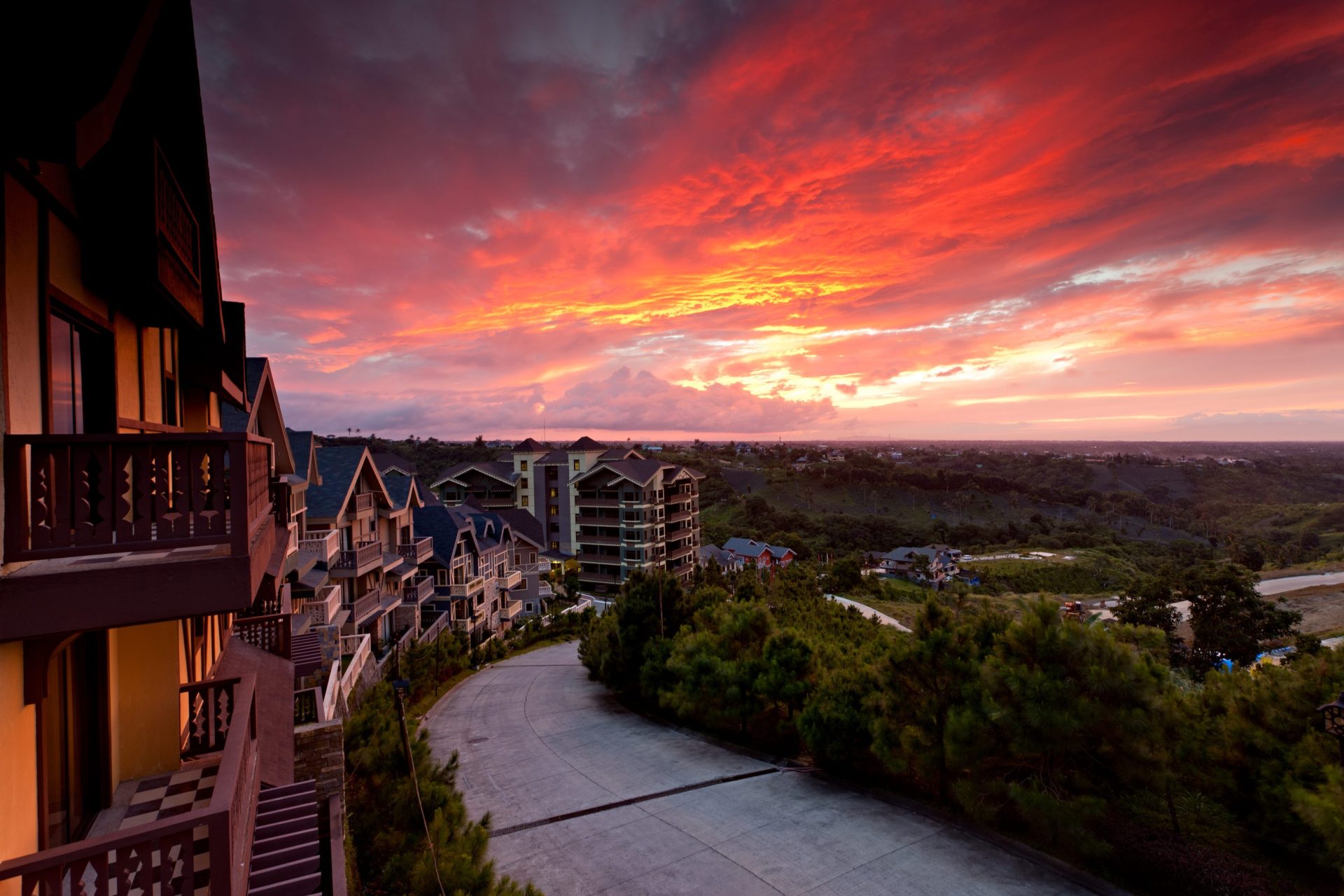
What is a luxurious house?
Depending on whom you ask, there are various definitions of luxury residences. The most typical definition of a luxurious home is one with obscenely large interior spaces, first-rate features, and a high price tag. The size of the property, the number of amenities it has (such as a pool), and the cost of the home should all be taken into account when deciding whether or not it would be considered opulent.
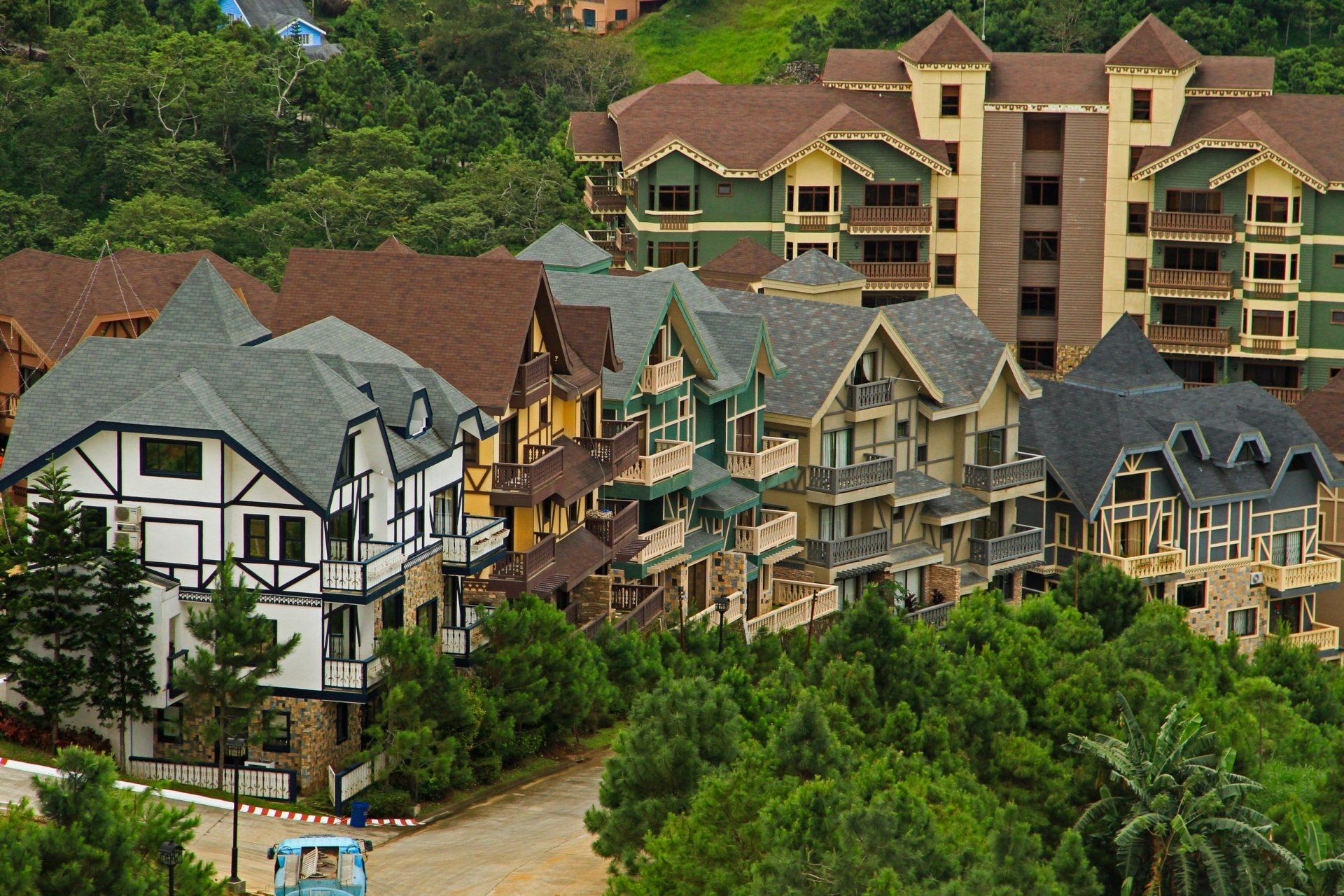
Because it can yield a return on the initial expenditure, a lavish home is regarded as an investment. This return may come from capital gains, rental income, or both. In addition, it is an investment because it could have tax advantages (for more information, we advise speaking with an accountant or financial counselor) and because most luxury homes are in desirable locations, where value typically rises over time.
Why there is an increased demand of luxury homes for sale?
The market for luxury real estate has experienced a significant rebound along with the restoration of normal economic activity. There has always been a need for residential real estate, but consumers also have a preference for other asset classes. Since the start of the pandemic, there has been an increased movement toward investing in real estate, notably residential, and here are some reasons why:
-
Amenities
Homes are no longer about the bricks and mortar they once were but about the complete living experience. This attitude seems to be the driving force behind the increased desire for larger homes with upscale features. The demand for smart luxury homes with advanced surveillance systems has nearly doubled in the first half of the past year.
The current increase in demand in the luxury market reveals a hard consumer mindset that places a premium on life’s experiences. This is valid not only for real estate but also for other upscale purchases. Due to increased worldwide exposure, consumers have changed their perceptions of what constitutes a luxury property and have become more discriminating.
Amenities became something buyers look for when it comes to a home. In the Philippines, Brittany by VistaLand offers properties with visible luxurious amenities. Georgia Club is home to many of the elite individuals and families in the Philippines. The enclaves at Brittany Sta. Rosa differ from other subdivisions and gated communities in a number of ways. More than just lovely homes are available in these premium real estate communities. Living in Georgia Club also means enjoying a better quality of life in a tranquil area that is the ideal fusion of elegance and comfort.
-
Size
When selling a house, brokers usually pitch the size of the pre-selling house first for it to be on top of the listings. This is because consumers bigger established country homes give more space well as privacy for the homeowners. Larger houses located on villas make a home more welcoming to family and friends as guests. Large expanse for outdoor activities and multiple rooms inside the house for the dedicated use of activities, there is no shortage of space for everyone.
The Brittany Collection has several works of art that are considered to be masterpieces, including one called the Ghiberti Luxury House, which has a floor space of this luxury home model is 349 square meters (floor area), and it features a tower that is reminiscent of a castle where you can live like royalty. It has an interior courtyard that serves as the home’s focal point, designed to make it perfect for big family gatherings and getting together with friends and relatives.
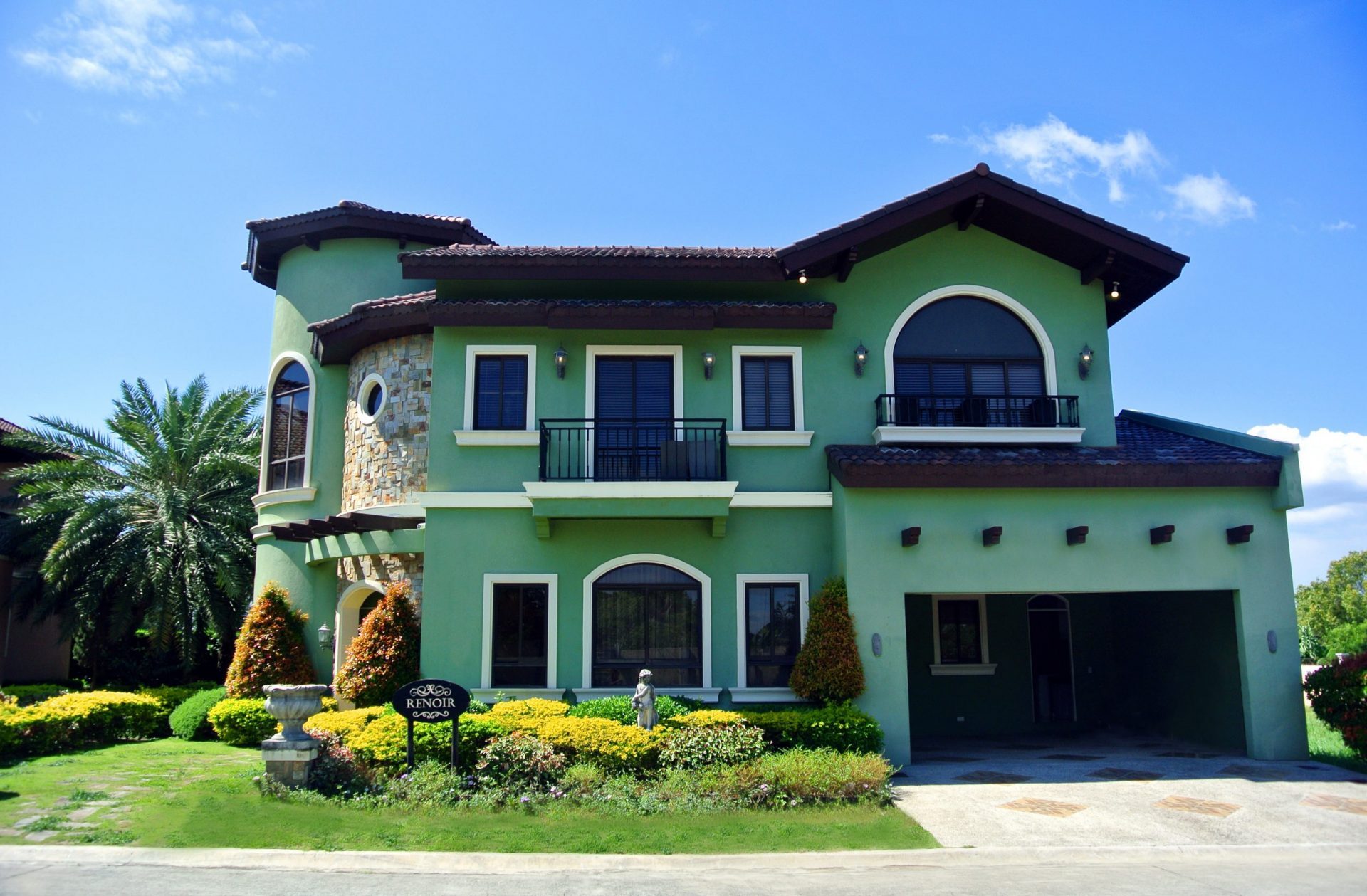
This luxury house model is a testament to Brittany’s promise of luxury living to the market segment comprised of wealthy individuals.
-
Location
Now that strict restrictions have been lifted, travel time going to the office and school must also be considered when buying a house because a house located on top locations and in proximity to popular cities is an advantage.
A tip for this is that, find your favorite city near your office, schools, as well as malls, and recreation parks, then search for a luxury house for sale within that area. If you don’t have an idea to may where it be, here are some good pitches for you.
If you like staying in the south, hours of drive away beaches of Batangas, Crosswinds Tagaytay may be for you. Because Tagaytay is outstanding real estate in terms of safety, environment, and weather, you won’t regret relocating there or even making an investment there. One of the safest areas in the world is the one that Crosswinds Tagaytay is a part of. It is not surprising that Tagaytay has a well-deserved reputation for safety, given the abundance of luxury subdivisions that demand round-the-clock security for residents’ peace of mind.
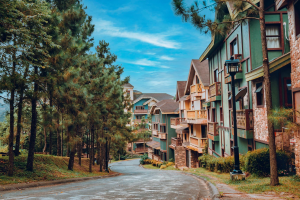
Additionally, Tagaytay is devoid of the problems that afflict the lowlands below. It is positioned in a prime elevation so that it never has to face floods, which is a widespread and seasonal annoyance in the cities below. You won’t ever have to be concerned about storms and water ruining your possessions or disrupting your life.
Additionally, Tagaytay experiences nearly ideal weather all year round. If Baguio is the nation’s summer capital, Tagaytay is its less well-known younger sibling that yet provides the same level of quality. This location is ideal for both a vacation and a home because it is surrounded by thick foliage and is consistently cool, even in the height of heat.
-
Design
The importance of living in a healthy environment has been highlighted by the pandemic, and the subsequent lockdowns made it vital for properties to include outdoor spaces in residential layouts. The new meaning of luxury is not roof decks or penthouse terraces, but rather community gardens and green belts that are intermingled with the very premises of the residential complex.
Living in a luxury home involves more than just being opulent; security is a crucial aspect that must be taken into account. Every new homebuyer places a high priority on family safety in light of the devastation the pandemic inflicted. Because luxury real estate properties include cutting-edge security systems and processes, they outperform lower asset classes in this area.
Conclusion
The nation’s real estate market has transformed in recent years to become a customer-centric or buyer-first market. This was created in great part as a result of the pandemic’s experiences. People have been drawn to invest in opulent mansions because homebuyers now prefer ecologically sustainable properties with world-class amenities which are located on top locations.
Having business cards is very important when it comes to making your business more accessible to people. It is not enough, though, that you have one. You have to make your business card pleasing to the eyes as chances are, your potential clients are receiving a dozen other business cards from other businesses, too.
Deciding on the business card design is actually not as easy as people may think. With tons of designs and templates available, it can be hard to choose which business card design will entice the most customers to give you a call. This article will list trends in modern business card design that you can choose from when making your own.
Whatever your job is — whether you are selling luxury real estate like Brittany homes or offering graphic design service — the following tips can help you promote your business and be remembered by your clients in the midst of competitors.
Modern Business Card Design Trends To Know
Plastic
One of the best things that happened to business card designs is the use of plastic instead of the usual cardstock. Using high quality plastic for your business card will make it look like a fancy credit card that your clients will put in one of the pockets of their wallet.
Using plastic will get the attention of your client, since most other business cards are made of cardstock. This will also make your card durable as it will be resistant to tears, folds, stains, and water. Your card will be readable for a long time and will be very hard to ignore.
It will also make your card look more serious and expensive, making it fit even for people selling the most beautiful houses in the Philippines from Brittany Corporation. A house and lot for sale is one of the biggest purchases that people can make, so better make a strong impression with your real estate business cards.
Aside from the durability, plastic also allows you to make a transparent or translucent card, making it sleek and unique, which brings up the second trend.
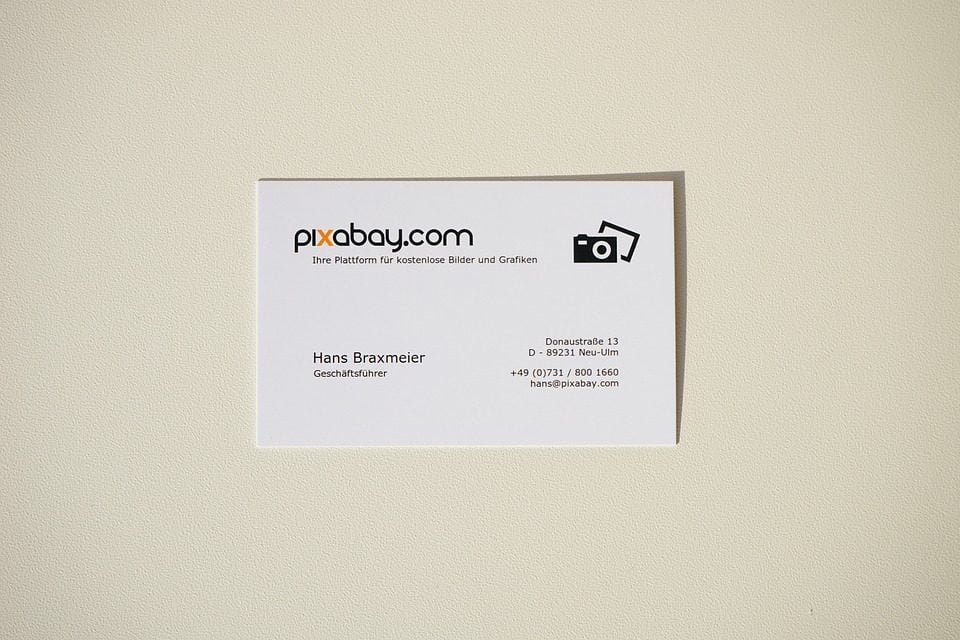
Sleek and Minimalist
Deviating from the old-fashioned business cards that were text-heavy and hard to read, modern business cards are sleek and minimalist. Minimalism is the new “in” now and it extends to luxury real estate, daily habits, and business cards.
Do not confuse your clients with overly fancy fonts and too much text. Rather, focus on just the important details and lay them out in such a way that it is easy to look at and read. Do not fill up all the space and strategically place the important things, like your contact details, for emphasis. Other details that can wait can just be placed on your company website that the client will check if your card is enticing enough. Some websites, like the one of Brittany Corporation, are already well-designed, so you just have to think of a way to get your clients to check it with your real estate business cards.
Contrasting Colors
Humans are highly visual and they place a lot of meanings on colors. It follows, then, that you should use them wisely. Your card does not have to be very colorful. You just have to use a few that blend well together.
Colors can manipulate your clients’ impression on your business. Using strong colors like black and gold can make your business appear to be a high end one. The use of pink can make your card look like a statement. At the end of the day, do not just choose colors that you like, but go with the ones that best represent your business.
Contrasting colors can also help some details stand out. You can use a darker hue, like midnight blue, as the background color, and then you can put the important details like your name and contact number in yellow textboxes. When choosing a color, also consider your company’s logo and the other images that you will put in the card.
Bold Fonts
Keep in mind that you do not have to be too formal when making your business card, so no need to stick with teacher-approved fonts. Feel free to use bold fonts that will make your card stand out.
When you’re designing you card, experiment with fonts and letterings that are out of the ordinary, and then try combining them so you would know which fonts go well together. Tall fonts can create an impression of wealth and elegance. Sans serif can make your card look cleaner and minimalistic. Go with fonts that are simple yet fashionable, and easy to read.
Logo
Logos are not a new thing, but what’s new is the way they are presented. Logos are very important and they should not just be placed in the corner like it’s just a requirement that has to be there. Beautiful logos should be emphasized more, so they will provoke thought and will easily be remembered.
A great way to do this is to make the logo bigger and noticeable. Some luxury real estate agents even think that the right place for your logo is the very center of the front of your business card. They would put nothing else in the front and then all the important details at the back. This is a guaranteed way to make your clients focus on the logo of your company.
Portrait
Your card may easily get lost in a stack of business cards, and one way to make sure it sticks out is to create a free business card with a vertical orientation. The modern business card is designed to catch the attention of clients, so you want your real estate business cards to be different from the others. That is how to separate your brand from others with a business card.
If you are going to sell the most beautiful houses in the Philippines, you need to make your business card design unique, so that it will easily be remembered. Make your card a standout, just like Brittany homes.

QR Code
The addition of a QR code on your business card is great, because it can lessen the amount of text you have to put. Everything you need to tell your clients can just be on the website that the QR code will direct your clients to. You just have to make sure that your client actually knows how to scan a QR code.
Your business cards can contain just the most basic details along with the QR code, and then all the other things like statements, your credentials, the house and lot for sale that you are selling can be on the website.
Personal Touch
Always, always add a personal touch to your business cards, so that they will be remembered. Do not be limited by the tips listed here, but you can go with a quote about the most beautiful houses in the Philippines, to let your clients know that you are serious about your job and that you reflected on it well enough to come up with an elegant statement. You can also put a professional portrait of you on the business card to make a strong impression.
Conclusion
Your business card is more than just a business card. Given the right design, it can help you make a powerful first impression on clients, and it can just be what pushes potential clients to be actual buyers.
Do you want to be a seller for Brittany Corporation? Go offer the most beautiful houses in the Philippines to your clients with a solid business card for a successful career in selling house and lot for sale. Check out Brittany’s E-Suite seller portal here.
Suggested Read: Pay For Your Southeast Asian Vacation By Scanning QR Codes
Suggested Read: How Does Grand Home Entrance Make A Statement
Suggested Read: Stylish Water Bottle Brands You Should Have
Suggested Read: Baguio Travel Requirements 2022
Now that the new year has come, one of the things that everybody strives to do is be successful on a particular path they have chosen. And this is one of the many things that a new year holds: success in the things that we put our minds to only if we are willing to work hard for it. Or perhaps, you have decided to embark on a new journey and pursue a dream which you have been eyeing for so long. Or perhaps, you are interested in trying a new thing which is real estate. If you are interested in starting a career in the real estate industry or you have been working as a real estate agent for quite some time now and you are desiring of improving yourself so you can be the best in your field, here are some of the real estate tips for you
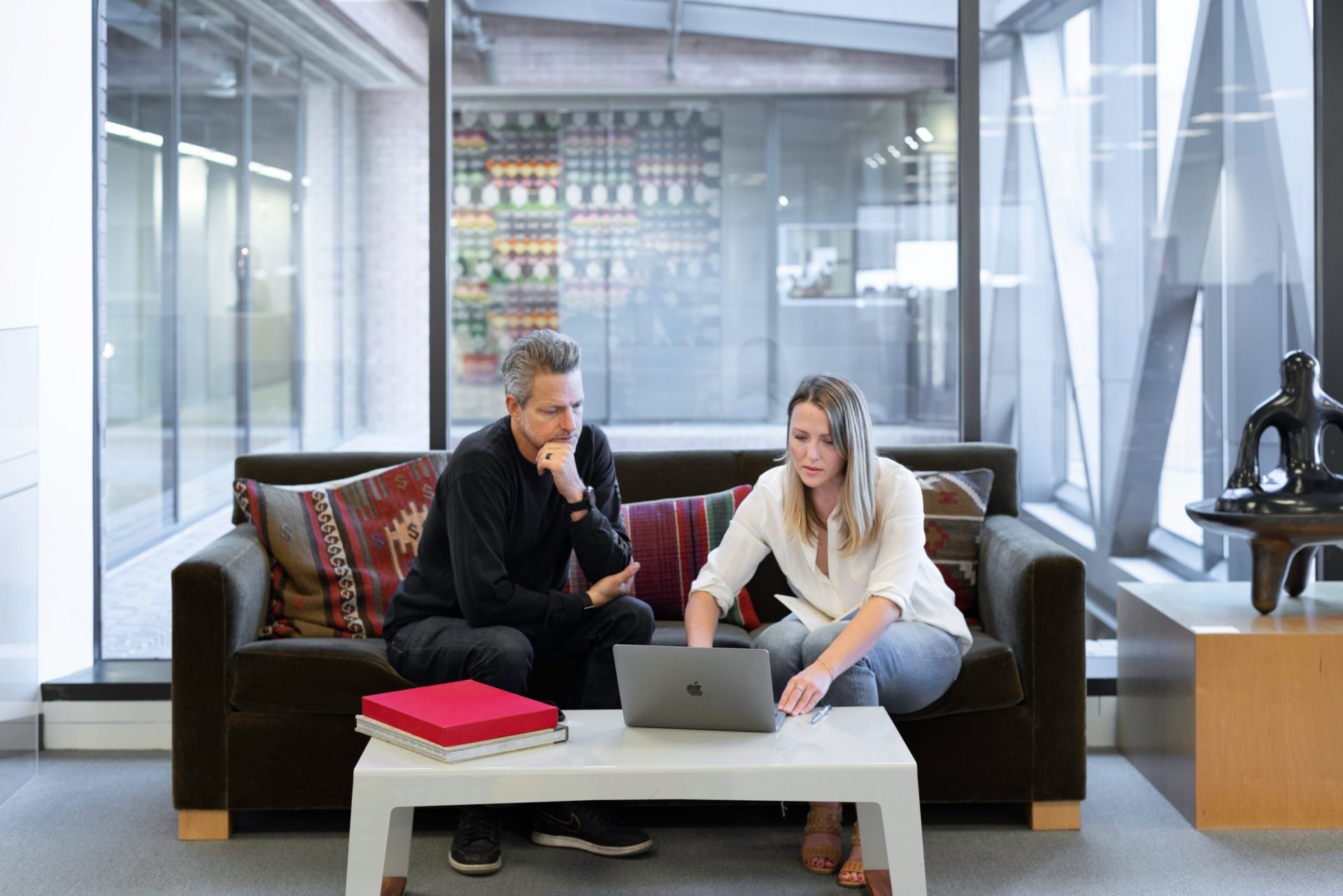
Real estate agents do not only sell properties. They also do other things that will expand their network in real esate.
Real estate tips to become a successful real estate agent
Starting a career in luxury real estate is promising and fulfilling for all who desire to be in this industry. While it looks intimidating and challenging because of dealing with and managing the roundabouts of selling real estate properties, it is not as complex as what you perceive it for as long as you are determined to be part of it. After all, just like any other profession, it takes a whole lot of hard work to become a successful real estate agent. As a matter of fact, this is how they put it: success is not built overnight. It takes a long journey ahead, but everything will be worthwhile.
-
Be on time but be early if you can
A lot of experienced real estate agents will tell you that the first thing that successful real estate agents have to bear in mind is to start their day well by getting up early in the morning. Cultivating a habit where you wake up early every day is the key to accomplishing many things in a day. Start with preparing a good breakfast, exercising, reading a good book, or walking your pet. Doing so will prepare your mind for what lies ahead on that day and condition your body for work. Part of starting your day early is training yourself to show up no matter what. After all, this practice takes no zero talent. All you need to do is be consistent and stay disciplined.
-
Be professional
Successful real estate agents have a greater sense of professionalism, especially in terms of conduct which is vividly seen in the way they communicate and negotiate with their clients. Moreover, professionalism doesn’t only pertain to the relationship between the buyers and sellers. If you want to be effective and successful, professionalism must manifest in all areas of your identity as a real estate agent. This includes making sure that you dress up appropriately and you practice positive body language. Being professional also extends to the materials you present to your clients may, be in the zoom meetings you conduct or in person. Make sure that you have quality photos and compelling descriptions of the properties you sell. Moreover, free your letters and proposals from any spelling and grammatical errors. During meetings, be courteous and attentive. Clients can notice easily if you’re prepared and if you know what you are saying. Make sure you know already through initial interviews what your client needs before scheduled meetings.

Putting a lot of hard work is the first key to success in real estate.
-
Be a techy-savvy
Since the real estate business is constantly improving, the call to be techy-savvy for real estate agents is a necessity and highly advantageous. With real estate developers maximizing the use of the internet and other technological tools to their advantage, real estate agents should adapt as well and learn how to use the internet to promote the properties they are selling and to level up their competition with other agents. Start with working out your social media profiles. Promote your listings to your Facebook and Instagram accounts. Consider creating a website when you can create your brand as a real estate agent. With a website, you can be creative and put content that will promote your real estate brand and listings. To help you with your website, look for a social media content producer to assist you to navigate the roundabouts of handling a website. This also means being able to convert real estate information into high-quality and easy-to-digest visual materials. Moreover, part of being techy-savvy is informing yourself about the trends in the market of real estate. With the amount of information you can get from the internet, updating yourself about the latest trends will help you to properly negotiate with your clients.
-
Be mentored by an experienced agent
There are a lot of ways in order to grow as a successful real estate agent, and one of those is to be teachable. Treat yourself to a consistent learning experience from experienced and esteemed real estate agents in your company. Doing so will increase not only your knowledge about the industry but as well as inspire you to stay on your path when the going gets tough. Remember: your way to success is a combination of hard work and humility. And one of the signs of being humble is if you’re willing to be mentored by others. After all, things are constantly changing, and being innovative is also a good strategy to climb the ladder of success. This is only possible if you will learn strategies from other successful agents.

To be able to mentor and be mentored is a sure sign of growing. And when you are growing as an agent, you are surely succeeding.
-
Be determined to expand your network of clients
Since real estate agents are known for being communicators because of negotiations, meetings, and site visits they do with their clients and other agents, it must be a priority for them to expand their sphere of clients and influences in order to thrive in the business. This means ensuring that you get to include in your clients or potential clients your family, friends, former classmates, neighbors, and the friends of your friends. And in order to keep track of all these people, make sure you have all of their contacts. To manage their personal details, create a spreadsheet or a database.
Conclusion
Once you have made up your mind to enter the real estate business, the next step is to consider following these real estate tips that could help you be successful in your chosen career
Being a real estate agent has a fair share of challenges and perks. But if you have what it takes to stay in your purpose and commit to being successful, you will eventually get there. After all, all the successful real estate agents have been there. But it will all start when they begin the journey and stay on the path until every effort becomes the piece that will make up the entire picture of their success story. Moreover, if you can also consider being a part of a real estate developer with a pool of esteemed real estate agents, this will also help you to become successful. Being surrounded by other agents in a company where it prioritizes the success of their agents will inspire you to press on.
At Brittany Corporation, the agents are trained and mentored to be the best they can be. Consider checking out their career page for any hiring positions.
READ NEXT ARTICLE: LUXURY REAL ESTATE: WHY VENTURE IN IT?
READ NEXT ARTICLE: LUXURY REAL ESTATE BROKERS FOR THE AFFLUENT MARKET
Chinese New Year is approaching and with it comes good fortune, festivities, and the beginning of great things for those who celebrate it. The lunar new year is on January 22 this year, and it is an important holiday, so you should celebrate it in the best way you can. What better way to honor it than to spend Chinese new year in glass house?
Having a glass house in a location such as Forresta Villar Land is associated with fortune and prosperity, two things that are manifested in the Chinese new year. Bring your family and your closest relatives, then, to your luxury house and welcome new year’s day in style.
Continue reading this article for some tips on how to maximize luxury homes like luxury real estate in Forresta during Chinese new year. It will cover things from Chinese new year traditions to avoiding bad luck.
Watch Fireworks Inside Your Forresta Glass House
One tradition during new year’s eve is to watch beautiful firework displays around luxury homes, and this is especially important during the Chinese new year. Fireworks are supposed to bring in happiness and good fortune to the family. They also serve to welcome good spirits and drive away the bad ones.
One of the perks of celebrating Chinese new year in glass house is the fact that you can enjoy the beauty of colorful firework displays without having to go out of the house, since the family can see through the glass walls. This is important for the old members of the family who would rather be seated than standing during the firework show. This is also a way to enjoy all the colors and lights without having to inhale smoke and chemicals from the firecrackers.
Seeing the beauty of nature and the festival on new year’s eve without having to go outside your home is a major advantage of luxury lots in Daang Hari. Be sure to check out luxury homes in Forresta Villar Land, so you can have the most luxurious Chinese new year in glass house.

Have a Family Reunion in Your Luxury Home
The Chinese people usually gather during the new year’s eve, so they can celebrate together. It is always best to celebrate the public holiday with the family, so it’s merrier for everyone.
Welcoming the Chinese new year in glass house is a great idea, because it lets the extended family members have merriment in a luxurious house. Wealth is always a worthy thing to celebrate, or even aspire for, so your family should definitely celebrate in places like Forresta Villar Land. Check out luxury lots in Daang Hari, so you can wow your relatives every Chinese new year.
Stay Up All Night in a Beautiful Home
Another tradition during Chinese new year’s eve is to stay up late, especially for the younger ones. The belief is that the longer they stay up, the longer the lives of their elders will be. Luxury real estate can help with this, because it is easier to stay up in a fabulous home where there are lots to do.
One great activity to keep people awake at night is playing Mahjong. Gambling on Chinese new year brings good luck, because handling cash is believed to bring financial luck. It is easy to lose track of time playing Mahjong, because not only is it fun, but it also requires focus, making it easier to pass the house. Remember, the longer you stay up, the longer the elders will live, so if you tire of playing Mahjong, have other games at the ready.
Glass houses and luxury lots in Daang Hari will provide the family an awesome sunrise view in the morning of the Chinese new year, making staying up even more worth it. Glass walls really do wonders for luxury homes.
Have Tikoy as a Luxury Experience
Eating Tikoy is a sign of good luck, which is why a lot of people in the Philippines eat it. It has become so mainstream that it appears to not be special anymore. However, it becomes a different experience if you eat it on Chinese new year in glass house.
sorry wala akong mahanap doon sa recommended sites na picture ng tikoy, so sa iStock ako kumuha
Tikoy is believed to bring prosperity, so you better not take it for granted. One way to make the experience of eating it memorable is by serving it using your fanciest Chinaware in a glass house. Imagine having some Tikoy with tea served in a luxurious tea set, while sitting in a glass house surrounded by nature all around. Now that is how you serve Tikoy to your most special relatives.
The people who plan on staying up late can also have Tikoy as a snack while looking at fireworks through the glass walls. It can also be served with coffee after breakfast, on the morning of the Chinese new year. Luxury real estate helps make sure that whatever you do in it is a rich experience.
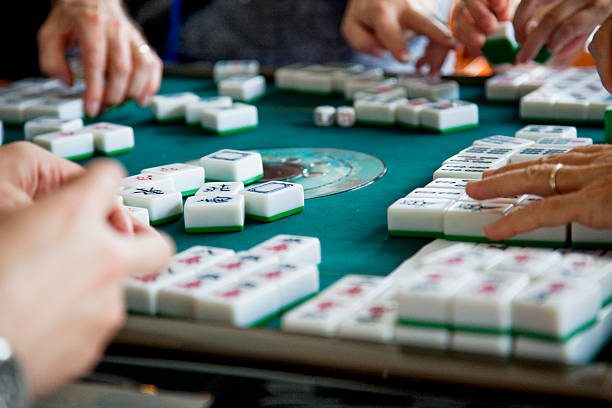
Exchange Red Envelopes in a Worthy Home
The red envelopes used by the Chinese people to give money, usually to kids, is called the ampao. It is not just a container of cash, since the envelope itself has a huge significance. If you give someone an ampao, that means you want him to be safe and happy in the coming year. Other meanings of the ampao are strength, good fortune, and power.
An envelope with this much significance calls for some rules. When you put money in it, make sure to put only bills and no coins for good luck. Crumpled bills bring bad luck, so use only money that is new. Avoid the number 4 when considering the amount to put in it, because 4 means death to the Chinese. When receiving the red envelope, use both hands and open it when you are not in the presence of the giver.
Want your kids to receive big amounts in their ampaos? Celebrate Chinese New Year in glass house in Forresta. People would be more willing to give generous amounts of money in luxury homes. Relatives would be very grateful that you invited them to celebrate in such a beautiful house that it would feel wrong to give small denominations.
Conclusion
Chinese new year is an important holiday, so make sure to celebrate the first day of the year of the rabbit with your extended family in a beautiful glass house. Not only will it reflect the prosperity you are all hoping for, but it will also make the celebration a beautiful one, because the nature, fireworks, and even the sunrise the morning after will be visible to everyone who is celebrating within the glass walls.
Suggested Read: How To Spend Chinese New Year In Your Luxury Home
Suggested Read: Must Try Coffee Shop: Coffee Project Glass House
Suggested Read: Why Spend Your New Year In Baguio
Suggested Read: Best Architectural Home Designs
Having guests over is one of the pleasures of having a nice home. There is no feeling like spending time with your favorite set of friends or cousins in your home. It makes sense, then, that you make the guest room well-equipped to make your guests feel welcome.
One of the worries that people have whenever staying at another place is that it won’t have all the things that they need for daily living. Everyone has something that he needs every day, and he just can’t bring it over to a staycation or a sleepover, because it would be impractical. This may stress your guest out and may even make him hesitant to go. As the host, it is your responsibility to make sure that your guest has everything that he needs in your guest room.
This article lists down the guestroom essentials that you have to provide for your visitors. Luxury homes Philippines, like the ones in Forresta Villar Land, should have guest rooms that can please and accommodate any guest.
Guestroom Essentials Checklist
Towels
You should always be the one to provide your guests with towels, because towels are very bulky to bring. This is one of the most important guestroom essentials for luxury houses in the Philippines that you should even tell your guests in advance that they have no need to bring their own towels.
You can place a set of towels on the bed in the room, and the set should at least include a bath towel, a hand towel, and a face towel. You don’t want to skimp on these, so make sure to get a set of soft towels with no animal fur. Luxury homes Philippines should have absorbent towels, like microfiber ones. Also make sure that the towels are fresh and were not kept in a drawer for too long.

Toiletries
Another way to make your guest room more welcoming is to provide some basic toiletries for your guests. Your guests’ bags would be a lot lighter and they would not have to spend money on travel-sized stuff if the bathroom near your guest room already has what they need.
No need for anything fancy when it comes to guestroom essentials. Just the usual soap, shampoo and conditioner, toothbrush, and toothpaste are enough. Add a small bottle of deodorant and a bottle of lotion, if you think your guest will appreciate them. The guest is expected to bring any other skin care or make up product that he needs.
Mini Fridge
One thing that a guestroom for luxury homes should have is a mini fridge for a wow factor and for its practical convenience. A guest will definitely feel welcome if they can have a cold drink without having to leave the room. A mini fridge will definitely let luxury lots in Daang Hari live up to their name.
You can supply the fridge with an array of drinks, so that your guest will have options. If your guest has a sweet tooth, he may also appreciate it if you include a pint of ice cream or two. Mini fridges definitely do have a place in houses in Forresta Villar Lands and other luxury communities.
Tea and Coffee Things
A guestroom for luxury homes should have tea and coffee station for the guests to feel even more at home. People have these beverages on a daily basis, and there is no reason for them to stop having them in your house in Forresta.
The station should have an electric kettle, a pitcher of water, teacups, teaspoons, coasters, and of course, tea and coffee. This will encourage them to drink coffee first thing in the morning, so they can be more chirpy when facing the host’s family and other guests.
Some guestrooms in luxury houses in the Philippines even have their own balconies. You may want to set up a garden table and a few chairs out there, so it can be a great spot for an afternoon or an evening tea.
Closet
Guestrooms in luxury lots in Daang Hari should have closets, so that the guests will have a room for their stuff. One thing that will take the good ambience out of a guestroom in luxury homes Philippines is an opened and unpacked suitcase in the middle of the room.
Provide the closet with a set of hangers so the guests’ clothes will not wrinkle in their bags. Even if the guest will not be staying for long, a closet will still be one of the guestroom essentials, because it is a good idea to keep bags and other stuff in it, so that the room can remain tidy. A guestroom for luxury homes should always be neat and spacious, so that the guest will feel comfortable and will not have to trip over his own belongings.
You can also put the other guestroom essentials in the closet, such as the towels mentioned earlier and perhaps a pair of slippers.
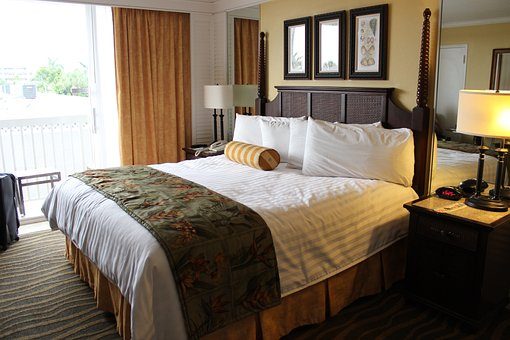
Bedside Lamp
Guestrooms in Forresta Villar Land properties should have bedside lamps. Not all houses in luxury lots in Daang Hari can be smart homes and have remote controls for the lights, air conditioners, and other fixtures. But it would be a huge relief to the guest if there is a lamp in the bedroom, so he would not have to stand up to turn the lights on in the middle of the night.
When looking for a bedside lamp for your guestroom in Forresta, look for one that has settings for different light intensities to suit the guest’s preferences. Whether he wants to read a book before bed, go to the restroom at night, or just want to have a look at something, there is a specific brightness level for his need.
Extra Cushions and Sheets
When guests stay over your home in Forresta, you do not want them to think that you are giving them just the bare minimum. You want them to feel that they are valued. It is wise to put some fresh extra pillows, blankets, and sheets in the closet, then. This will give them the ultimate experience, staying in luxury houses in the Philippines.
Your visitors’ sheets may get dirty or soiled for various reasons, and you want them to be able to replace their sheets without asking you for some. They may also need a lot of pillows to be able to sleep, or they may think that the weather in Forresta is a little too cold. Putting some extra blankets, sheets, and pillows, is a good idea so they won’t have to bother anyone in the middle of the night for these.
Conclusion
This list of guestroom essentials can help make sure that your guests have everything that they need so that their stay in your luxury home will be comfortable. Different people have different needs, though, so make sure to ask the guests if they have other needs that will make their staycation in your house better. A little hospitality will be greatly appreciated, but if you go extra, you can make the guests want to come back for another visit.
Suggested Read: Global Balance Sheet: How Productively Are You Using It
Suggested Read: Best Ways To Keep Your Glass House Clean
Suggested Read: Smart Fridges For Your Luxury Kitchen
Suggested Read: Ways To Care For Your Golf Clubs
Aside from a New Year’s Resolution or Goals for the brand new year, let’s admit that we also look forward to those Holidays and Long Weekends even before the coming of the new year.
Did you know that there are numerous advantages to planning ahead? That includes increased optimism, a reason to be grateful, and a sense of control over your destiny. Moreover, a healthy sense of anticipation can motivate us at work and help us get through tough times.
So don’t delay go and find yourself selecting and planning trips like a long weekend in Boracay with your dear friends and families. Make something exciting for yourself!
List of Official Holidays and Special Non-Working Days in the Philippines 2023
A. REGULAR HOLIDAYS
New Year’s Day, January 1 (Sun)
Araw ng Kagitingan, April 10 (Mon)
Maundy Thursday, April 6
Good Friday, April 7
Labor Day, May 1 (Mon)
Independence Day, June 12 (Mon)
National Heroes Day, August 28 (Mon)
Bonifacio Day, November 27 (Mon)
Christmas Day, December 25 (Mon)
Rizal Day, December 30 (Sat)
B. SPECIAL NON-WORKING HOLIDAYS
EDSA People Power Revolution Anniversary, February 25 (Sat)
Black Saturday, April 8
Ninoy Aquino Day, August 21 (Mon)
All Saints’ Day, November 1 (Wed)
Feast of the Immaculate Conception of Mary, December 8 (Fri)
Last Day of the Year, December 31 (Sun)
Additional Special (Non-Working) Day, January 2 (Mon)
Additional Special (Non-Working) Day, November 2 (Thu)
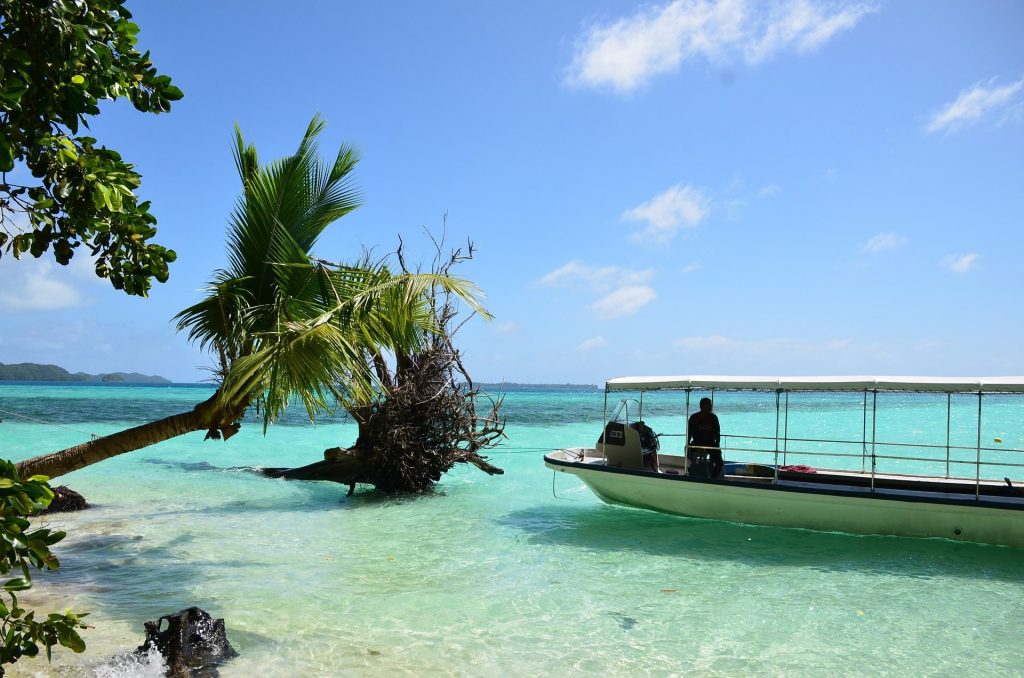
Plan Your Time Off: Holidays in the Philippines and Long Weekends in 2023
The following are the long weekends in 2023:
January
January 1 (Sunday) – New Year’s Day
January 2 (Monday) – Additional Special Non-Working Day
April
April 6 (Thursday) – Maundy Thursday
April 7 (Friday) – Good Friday
April 8 (Saturday) – Black Saturday
April 9 (Sunday) – Easter Sunday
April 10 (Monday) – Araw ng Kagitingan (Monday nearest April 9)
May
April 29 (Saturday)
April 30 (Sunday)
May 1 (Monday) – Labor Day
June
June 10 (Saturday)
June 11 (Sunday)
June 12 (Monday) – Independence Day
August
August 19 (Saturday)
August 20 (Sunday)
August 21 (Monday) – Ninoy Aquino Day
August 26 (Saturday)
August 27 (Sunday)
August 28 (Monday) – National Heroes Day
November
November 1 (Wednesday) – All Saints’ Day
November 2 (Thursday) – All Souls Day (Additional Special Non-Working Day)
November 3 (Friday)
November 4 (Saturday)
November 5 (Sunday)
November 25 (Saturday)
November 26 (Sunday)
November 27 (Monday) – Bonifacio Day (Monday nearest November 30)
December
December 8 (Friday) – Feast of the Immaculate Conception of Mary
December 9 (Saturday)
December 10 (Sunday)
December 23 (Saturday)
December 24 (Sunday)
December 25 (Monday) – Christmas Day

Vacation Planning Ideas for Long Weekends
- You can choose a destination where the travel time is reasonable. Unless the main focus is the road trip, you don’t want to spend your entire weekend flying or driving. So choose a location that is a reasonable distance away and, if possible, take a nonstop flight. Remember to account for time zones. Take into account any time zone changes, so you know how much time you’ll have at your destination and when you’ll return home. You can also benefit from time zones!
- Make a start on your trip the night before your three-day weekend. If you are off from the weekend to Monday, you better start leaving on Friday evening. If you’re going on a long weekend road trip, it goes without saying that leaving the night before will help you arrive at your destination faster. If you’re flying, you might arrive late if you can only find a flight after you get off work. However, you will have the entire next day to explore your destination.
- Choose an advantageous hotel or rental location. If you’re visiting a city, choose a hotel close to the attractions you want to see, so you save time commuting between them. Hotels in prime central locations, such as downtown, are more expensive and may have high parking fees. So shop around for the best deals and prices! If all options are too expensive for your budget or level of comfort, broaden your search radius to see if cheaper hotels are available. However, before you book that lower rate, consider other costs.
- If you’re flying, bring all of your carry-ons. You should only need a carry-on if you’re only going for a long weekend. This should save you time waiting at the baggage carousel after landing. Remember, it’s all about making the most of your time! Packing cubes can help you compress your clothes. Would you like to bring more than one pair of shoes? Wear the pair that takes up the most room when flying.
- Accept that you won’t be able to see everything. The reality is that you will only be able to experience some of what be able to experience everything your destination offers on a long weekend. The sooner you realize this, the easier it will be to plan your trip. Don’t be disappointed or frustrated if you can’t see or do everything; instead, prioritize what you want to see and do. Also, save time and waste time or money going to something you won’t enjoy just because you feel obligated to.
Boracay in the Philippines for your Long Weekend Getaway
When navigating around Boracay, it is best to consider the three boat stations:
Station 1 is home to Boracay’s luxury leisure developments and the most beautiful beaches. It would be best to consider living here to relax and splurge on a relaxing getaway.
Station 2 is the hub of Boracay’s famous White Beach and is always busy! This area is packed with people, clubs, and restaurants if you want to be right in the middle of the action.
Station 3 is the calmest of the three. Isolated from the hustle and bustle, this is your best bet for a quiet and intimate time while saving money on accommodations, but f you have some money to splurge on, go on and have a pleasant stay in a luxury condo in Boracay.
Things to do in Boracay
- Enjoy some water sports. You must attend some water sports activities while visiting the Philippines’ beach city! There’s no better way to see the clear blue waters and white sand beaches than from above. Fly above the rest in your parasail and take in the scenery below. If you want to feel the rush, hop on a Jet Ski and ride through the waves of Boracay!
- Go island hopping. Joining a Boracay island hopping tour is one of the best things to do on the island. You’ll be able to explore and swim at some of its most beautiful and pristine beaches. The three famous beaches in Boracay are:
Magic Island – This island is well-known not only for its turquoise waters but also for its cliff diving. Magic Island has five diving platforms: three meters, five meters, seven meters, nine meters, and ten meters. Now, leap and jump!Crocodile Island – Crocodile Island is devoid of crocodiles. The name of this uninhabited island comes from its shape, which resembles a crocodile’s head. This island is teeming with marine life and is known as one of Boracay’s best scuba diving spots. A diverse range of fish inhabits the thriving coral reefs, including lionfish, scorpionfish, moray eels, cuttlefish, and groupers.Crystal Cove Island – This island, known initially as Tiguatian Island by the locals, became popular due to its unique crystal grooves. It has two limestone coves that can be reached by snorkeling. You can also feed the pigeons and collect seashells.
- Indulge in seafood and yummy delicacies. You’re probably hungry after such a long day of adventure, so go on and spoil yourself in many of Boracay’s best restaurants that offer various kinds of meals and seafood you have been craving.
- Relax in one of Boracay’s best spa houses. After a long day at sea, treat yourself to a luxurious spa treatment. You can try the traditional Filipino treatment and be relaxed and energized after using warm banana leaves carefully placed on key parts of your body.
- Enjoy Boracay’s nightlife or night market. Make the most of your final night in Boracay by partying the night away. There are numerous nightlife venues, including wild parties, bars, and lounges with live music. If you’re not into partying, just enjoy shopping for souvenirs. The best places to shop in Boracay include open-air malls, markets, and supermarkets that can provide you with everything you need for a relaxing vacation on a tropical island.
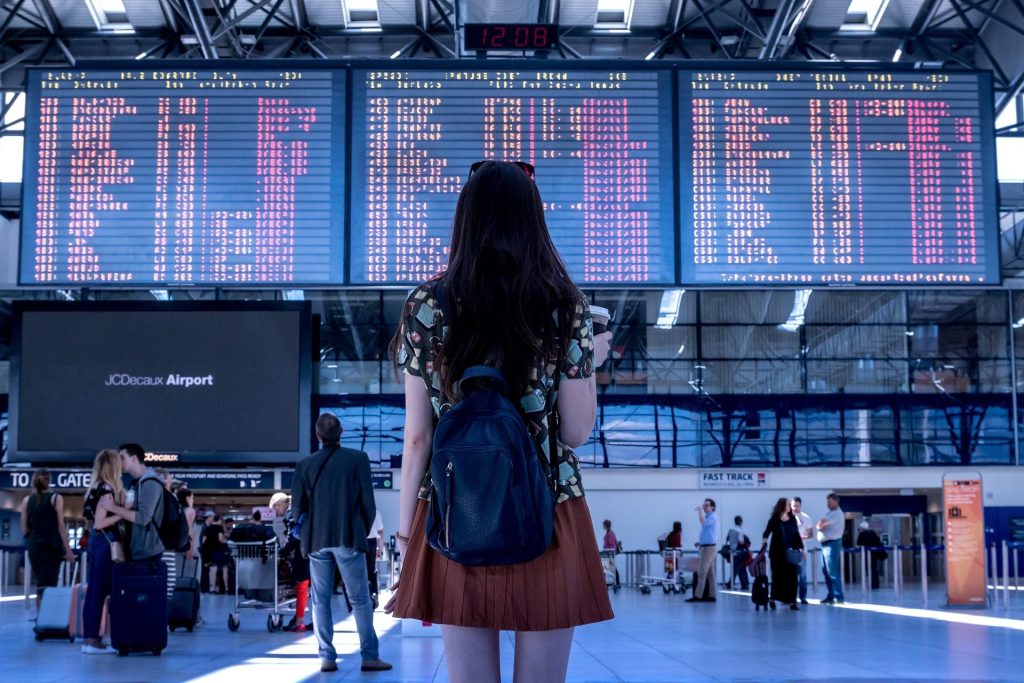
As we face this new year and new seasons, it is also appropriate to plan for things that will help us enjoy life more and see things outside our daily grind, whether at work, home, or school. Take a vacation, and plan for that trip to the place you have been dreaming of going to.
You can improve your physical and mental health, motivation, relationships, job performance, and perspective by taking time away from work and daily life stresses. A vacation can help you feel refreshed and ready to face whatever comes your way when you return.
Suggested Read: How To Prepare For Black Friday & Cyber Monday
Suggested Read: PAL To Launch Baguio-Cebu Services In December
Suggested Read: Why You should Invest In Boracay Philippines
Suggested Read: How To Beat The Monday Blues
Emergencies do happen all the time. Natural disasters can strike at the least unexpected of times. Now, the most important question is, are you prepared? Are you and your family prepared in times of crisis? While many find it terrifying to think about natural disasters and catastrophic accidents, shrugging these difficult situations off of your shoulders can increase the likelihood that they will happen and the consequences that you will most likely suffer because of them. As a matter of fact, the most practical way to deal with these unexpected circumstances is to consider the risks and be prepared when they happen as well as after they strike. That’s why it is important that you have atleast the basic list of Philippine emergency numbers in mind.
Here in the Philippines, more than 120,000 road accidents were reported in 2019 alone. And a huge number of these came from private car accidents. Many of the fatalities include the damage to property and loss of life of the people involved in the accident. With crises here and there, it is crucial more than ever to understand the importance of emergency preparedness and the steps you can take in order to ensure your own safety and your family as well both inside and outside your home.

With so many uncertainties looming around us every day, emergency preparedness should be taken seriously.
Emergency preparedness can come in various shapes and forms but the foremost is having a hand to come to your rescue when a disaster occurs. This means having within your reach a list of emergency numbers from different local government units. Here are the government units and their emergency numbers for your perusal:
Bureau of Fire Protection
If there’s a disaster that is common to man as a typhoon is common to a typhoon-stricken as the Philippines, it’s fire incidents. As a matter of fact, fire incidents do happen all the time and all the more when the summer is at its peak. Massive fires not only cause damage to properties but also can kill hundreds or worse thousands of lives. In case of fire incidents, here are the direct trunk line numbers of the Bureau of Fire Protection: (02) 8426-0246 and (02) 8426-0219. Bear also in mind that each city and/or municipality has its own local offices of the Bureau of Fire Protection so consider reaching out to your local government unit concerning this.
Department of Social Welfare and Development (DSWD)
Emergencies do not only come in the form of natural disasters. It could also be accidents involving the life of children, women, the elderly, persons with disabilities, and families in crisis or at risk. This is where the Department of Social Welfare and Development (DSWD) comes into the picture. They are mandated by the law to aid and administer social welfare programs designed to better the life and condition of the most vulnerable sectors of society. In emergencies where children, the elderly, and women are abused, the Department of Social Welfare and Development will rescue them. In case of such emergencies, you can contact them through this number: (632) 931-8101 to 07. They also have field offices nationwide. Each field office has its own contact numbers as well so feel free to check the field office near you through this link.
National Disaster Risk Reduction and Management Council (NDRRMC)
From warning signals to responding to emergencies, evacuations, public education, rescues, rehabilitation, and communication, the National Disaster Risk Reduction and Management Council (NDRRMC) do it all. It is an agency that works closely with the national government and local government units to come up with plans on how to prepare before natural disaster strikes and respond to the casualties after the natural disaster occurred. To reach them during emergencies, here is their trunkline: (02) 8911-5061 to 65 local 100. For the operations center, contact the following numbers: (02) 8911-1406, (02) 8912-2665, (02) 8912-5668, and (02) 8911-1873.
Department of Public Works and Highways (DPWH)
For vehicular accidents in various expressways, the Department of Public Works and Highways (DPWH) can help you. If you also need road assistance or your community is having major problems with the flood control systems, do not hesitate to call their emergency numbers: (02) 5304-3000 and 165-02. You can also contact the following numbers if in case you are needing assistance or you encountered an accident in one of the major expressways in the country.
North Luzon Expressway (NLEX)
Hotline: 1-35000
Trunk line: (02) 8580-8900
South Luzon Expressway (SLEX)
Hotlines: (02) 5318-8655, 0999-886-0893 (Smart), and 0917-539-8762 (Globe)
Subic-Clark-Tarlac Expressway (SCTEX)
Hotline: 1-35000 and 0920-96-SCTEX (72839)
CAVITEX
Hotline: (02) 165-8888
Trunklines: (02) 8683-8001 and (02) 8683-8002
Philippine National Police (PNP)
The Philippine National Police (PNP) functions as the enforcer of the law. They also maintain peace and order in the entire country and make sure that public safety is upheld. And so if you encounter crimes, robberies, fights, or anything that disrupts public safety, you can reach the Philippine National Police through its complaint action center hotline: +63 (8) 723-0401 local 7491.
Manila International Airport Authority (MIAA)
As part of its function, Manila International Airport Authority (MIAA) ensures that it is able to provide every Filipino as well as foreigners coming in and out of the country with safe and efficient airport facilities for domestic and international air travel. This agency is in charge of overseeing the movements of all airports in the Philippines. Of course, emergencies do happen in airports as well. If you have concerns with your air travel, contact MIAA via these numbers: 8877-1109 / +63 2 8877-1109, 8877-7888 / +63.2.8877-7888.
Department of the Interior and Local Government (DILG)
The Department of the Interior and Local Government functions to strengthen the local government units and ensure that they do their responsibilities to their constituents. Concerns that have something to do with local government units be it the execution of the projects that will benefit the entire community and/or delivery of basic services to the communities, reach out to DILG’s office through this trunk line number: 8876-34-54.
Conclusion: Emergency Numbers in the Philippines
Emergency preparedness is all about taking preventive measures to reduce the effects of damage that natural disasters or emergencies can affect you. The goal is to lessen the impact of the said emergency on your life and enable you to create a plan that will maximize the resources you have when an emergency occurs. For instance, you should have an at-home checklist where emergency kits and non-perishable food supplies are prepared and secured at all times. In this way, you will survive just in case help from the national or local government will not come as soon as possible.
Even on your vacation homes, you should also keep emergency kits with list of emergency numbers. It is fun to relax in your condos in Tagaytay, condos in Baguio, condos in Boracay, and other leisure destinations, but it is more pleasant if you are prepared for crises or other unforeseen situations while on vacation.
Above all else, emergency hotlines in the Philippines must be within your reach. With the advancement of technology, help can come at the most immediate time. Memorizing them will help save your life and the life of other people who happen to be with you in the same emergency situation. Moreover, having these numbers promotes compassion and empathy, especially in situations where you do not know what to do. Dialing these numbers will direct you to professionally trained dispatchers who can give you instructions during life-threatening circumstances. So make sure you know these hotline numbers. Prevention is always better than cure as they say. This is what emergency numbers are for.
READ NEXT ARTICLE: MUST-KNOW: NEW NUMBER CODING SCHEME
